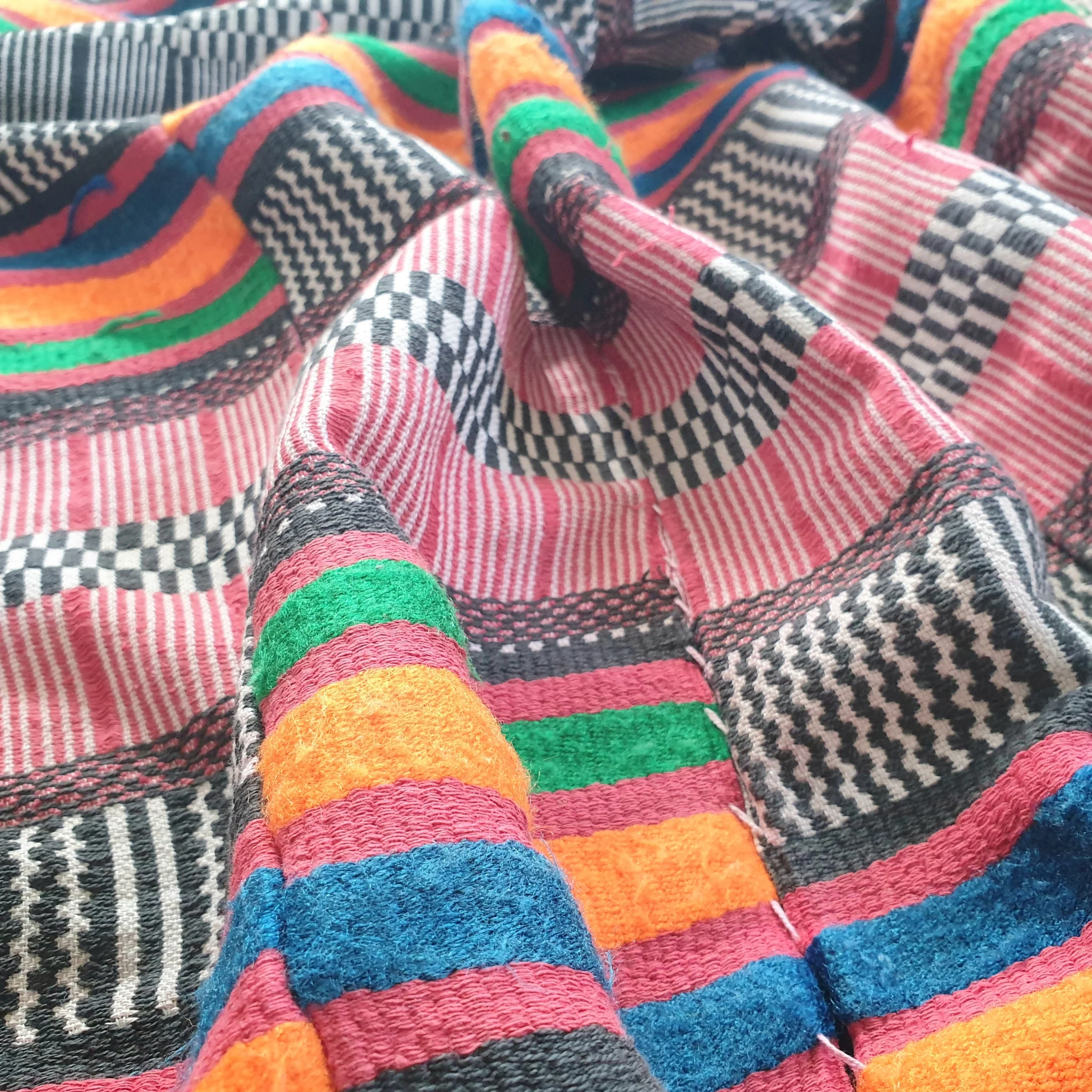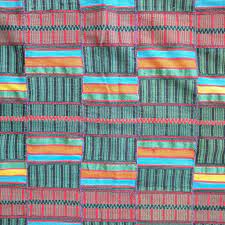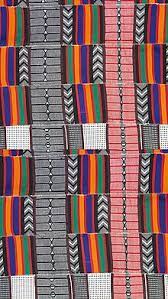Téra-Téra: A Fabric of Heritage, Expression, and Enduring Beauty
- la Djalobienne Eton

- Aug 21, 2023
- 3 min read
Updated: Jan 14, 2024
Woven within the fabric of traditional textiles are myriad narratives, cultures, and the mastery of artistic finesse. At the heart of this tapestry lies the Téra-Téra, an exquisite cloth that seamlessly blends history, artisanal prowess, and profound symbolism, acting as a tangible bridge to cultural heritage. Throughout the ages, the Téra-Téra has stood as a cultural emblem of Niger, weathering diverse challenges from ancient epochs to the modern era. This article closely examines the intricate artistry and profound symbolism that define the Téra-Téra, tracing its origins, craftsmanship, and role in significant life events. Let's embark on an immersive odyssey into the realm of this remarkable cloth, peeling back the layers to uncover its origins, significance, and meticulous artistry that forms the bedrock of its creation.
Origins History and Cultural Heritage
The Téra-Téra, also known as Soubane, is a traditional handwoven loincloth originating from the Songhai region in the Tillaberi Region of Niger. It holds cultural significance for the Songhai and Zarma communities, representing a millennia-old tradition of skillfully woven textiles in Nigerien cultures.
The meticulous structure of this tradition is intricately tied to the width of a leaf and the notches on a counterstick, enabling the harmonious fusion of decorative patterns in cotton strips. These patterns, depicting daily life scenes, such as figures at wells, oxen, donkeys, and camels, convey joy and symbolize agricultural prosperity for sedentary communities. In the past, the Téra-Téra adorned Songhai men and women, signifying elegance and benevolence, and was particularly worn during special occasions or as everyday attire among privileged classes. Affluent families supported skilled weavers, ensuring that each Soubane carried the artisanal touch of the family's chosen weaver.
Artisanal Mastery and Materials
Crafted by skilled traditional weavers known as "Tchiakey" in Zarma and "Masaki" in Hausa, the Téra-Téra is meticulously brought to life using a combination of wool and cotton. The weaving tradition among the Songhai-Zarma community is characterized by precision, as it revolves around specific measurements that enable the creation of seamless decorative patterns. The alignment of these patterns from one strip of cotton to another results in a harmonious and precisely calculated textile.
The tool is made up of four poles and two planks. His shuttle and his can, which come back to him from his ancestors, have nothing to do with the can and the shuttle of the machines. Formerly, it was made from a piece of millet stalk stripped of its contents, but nowadays, the weaver makes it at the carpenter's.
Symbolic Patterns and Cultural Reflections
Within the Téra-Téra's intricate adornments unfold a rich mosaic of motifs depicting the tapestry of daily life. Scenes portraying figures at wells, oxen, donkeys, camels, and other elements resonate with the joys and realities of everyday existence, encapsulating the abundance of agricultural life through the eyes of sedentary communities.
For generations, the Téra-Téra has surpassed the realm of mere fabric, encapsulating the essence of heritage while embodying the symbolism of prosperity and happiness. In past eras, the Téra-Téra occupied a cherished space in the closets of both Songhai men and women, gracing significant occasions and the everyday lives of privileged families. This beacon of grace cloth served as a conduit between tradition and refinement. Affluent households nurtured their weavers, ensuring that their chosen artisans meticulously crafted every piece of Soubane or Téra-Téra donned, perpetuating the legacy of their trusted craftsmanship.
Weaving Traditions in Life's Milestones, Especially Weddings
The Téra-Téra's significance extends seamlessly into life's milestones, with weddings occupying a particularly pivotal role. The bride's mother would establish a connection with a skilled weaver, entrusting them with the creation of her daughter's Téra-Téra. This selection hinged upon the weaver's mastery in intricately crafting the patterns that grace the cloth. In more prosperous circumstances, the mother might even procure two loincloths – one for the bride and another for the groom. Deeply rooted in the customs of the Songhai-Zarma, the Téra-Téra finds a revered place in wedding rituals. Brides traditionally covered themselves in this cloth as they journeyed to their husband's abode. This act bore profound cultural significance, symbolizing the metamorphosis from one life chapter to another while embodying the familial blessings bestowed upon the bride.
The Téra-Téra loincloth, with its interwoven stories and artistic mastery, stands as a testament to the resilience of tradition and the power of cultural expression. As the years progress, its legacy continues, weaving together the threads of history, art, and identity, ensuring that the rich tapestry of Songhai-Zarma heritage remains vibrantly alive.
In the vibrant hues of tera-tera cloth, the Zamar-Songhai people find a mirror to their rich heritage and soul. - La Djalobienne Eton
References:
- Le textile traditionnel africain : le tisserand, le métier et l’œuvre, 2020, retrieved 2021-07-13
- Que devient l’étoffe traditionnelle « Téra-Téra » ?, 2019, retrieved 2021-07-13


































Comments